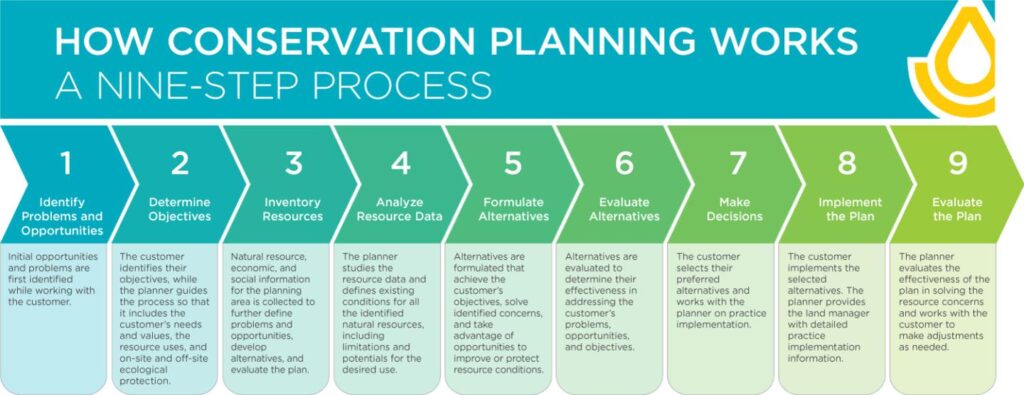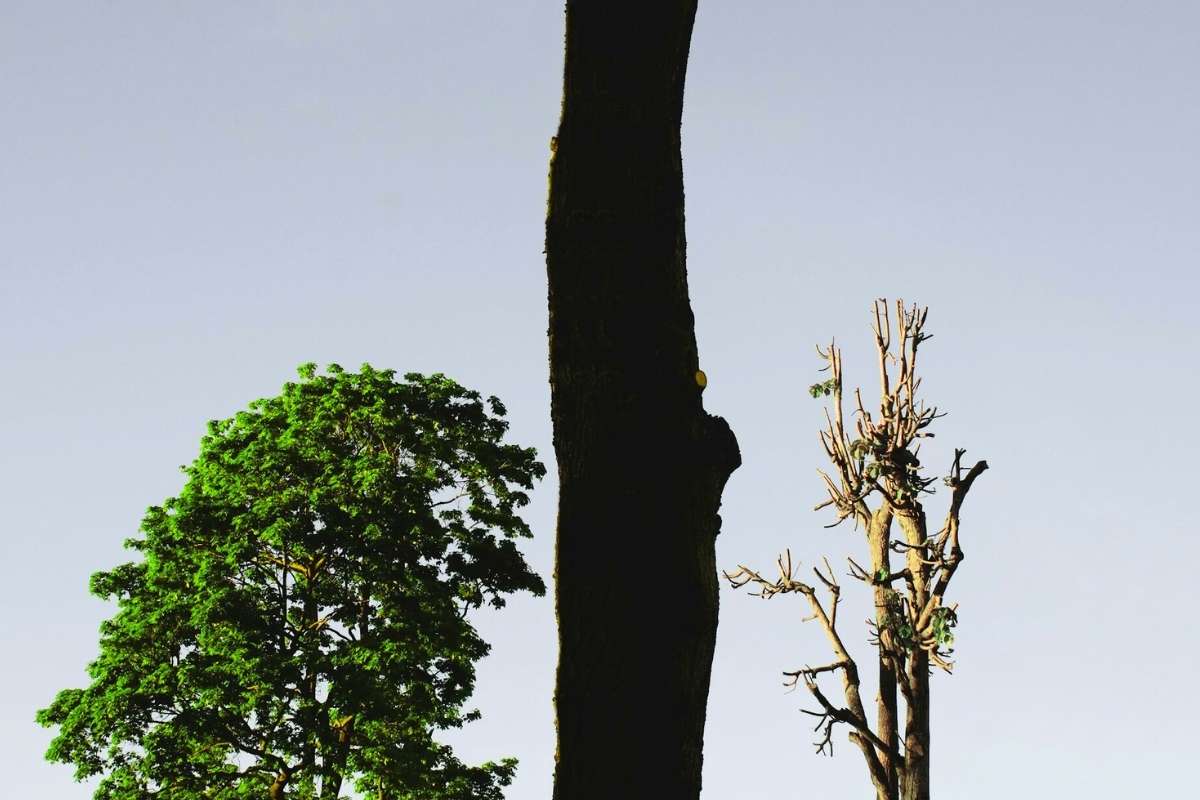It's frustrating to produce conservation planning videos that receive only a few likes, yet people aren't connecting. Most conservation planning videos often fail to ignite curiosity and interest because they're boring. These videos share the outcome but skip the aspects people crave, such as transformation. Seeing the struggle and process makes the reveal more fulfilling. Just think of your favorite home makeover show. The transformation is more potent because you experienced the journey.
Unlike home improvement shows, conservation plan videos seem to me like glorified final reports. The visual medium of video and film has been reduced to the information one can read in a written report. There’s too much talking and too little showing. But there’s more.
What’s Wrong with Most Conservation Planning Videos?
One of the biggest issues leading to boredom is the lack of footage during the land transformation process, which leads to recycling of what little footage you have. This footage shows what the land looks like today, but not yesterday.
Additionally, there’s a mismatch between the completed project footage used during the transformation segments and what it was like before. When your audience gets to the final reveal, they’re disappointed. They’ve already seen this footage or variations of it.
Humans Like Familiar, But Crave Difference
When conservation videos repeat duplicate completed-project footage, let alone topical details, they fail to engage the audience’s curiosity, the curiosity sparked by novelty and new information. According to Assoc. Professor Ming Hsu, co-author of the research paper Common Neural Code for Reward and Information Value, said, “To the brain, information is its reward, above and beyond whether it’s useful.” [1]
A dynamic conservation planning video showing sequential transformation over time will align with how people’s brains are wired to seek and value new information. Do you tune out when something is overly repetitive? I know I do. It's a common reaction and a sign that the audience's time and attention are not respected. This experience inspired me to write this article. I tuned out while watching the Wetland Restoration in Southeast Minnesota conservation video.
You might think, “Danami, you’re not the target audience.” You're right. However, I’m not addressing the verbal information but the visuals. I felt I could keep the video playing while I used the restroom and wouldn’t miss anything. This is the opposite effect of audience engagement. Now, let’s talk about how to fix this.
Include Video Storytelling Early in Your Conservation Planning Process
The easiest fix for your conservation planning videos is to document the process earlier than you think. Let’s use the USDA’s nine-step conservation planning process to map out where video storytelling best integrates. I’ve outlined which steps should include video documentation and why.

Step 1: Identify Problems and Opportunities → EARLY CONTEXTUAL VIDEO
📹 What to Capture:
- The initial conditions of the land before any intervention.
- Stakeholder concerns and discussions about the problems.
- Footage of the affected land (erosion, degraded habitat, pollution, etc.).
🎯 Rationale:
- Establishes visual context for the challenges being addressed.
- Provide before footage that will be crucial later for comparison.
- It helps avoid relying only on verbal descriptions of past conditions.
Step 3. Inventory Resources → DOCUMENTING BASELINE CONDITIONS
📹 What to Capture:
- Surveys, soil sampling, water testing, and other data-gathering activities.
- Aerial drone footage of the landscape before conservation work starts.
- Farmers, landowners, or community members discuss the land’s history.
🎯 Rationale:
- Gives a visual baseline for future comparisons (i.e., a “before” snapshot).
- Showcases scientific data collection in action, increasing credibility.
- Prevents missing crucial transformation footage once work begins.
Step 8. Implement the Plan → SHOWCASING ACTION & TRANSFORMATION
📹 What to Capture:
- Installation of conservation plan practices (e.g., tree planting, erosion control, wetland restoration).
- Farmers, engineers, or volunteers are actively working on the land.
- Close-ups of equipment, soil improvement, or water flow changes.
- Time-lapses of significant changes.
🎯 Rationale:
- The most visually engaging phase—people want to see the change happening.
- Ensures that the process is documented, not just the outcome.
- Provides variety instead of overusing finished-project footage later.
Step 9. Evaluate the Plan → BEFORE-AND-AFTER COMPARISONS
📹 What to Capture:
- Interviews reflecting on the impact of the conservation project.
- Drone shots showing large-scale landscape recovery.
🎯 Rationale:
- Ties the story arc together by visually showing impact over time.
- Creates a satisfying resolution for the audience.
- Allows conservation teams to prove effectiveness with clear evidence.
Clear, Engaging Conservation Stories Are the Goal
Although I’ve discussed visuals throughout this article, the underlying truth I’m speaking to is engagement. Visuals are a critical part of the film and video medium that capture and hold people's attention. Additionally, story structure plays an essential role in engaging your audience.
Suppose you continue using video to showcase your work. In that case, focusing on the visuals is advantageous rather than just the information. If not, consider creating an audio-only podcast. That medium works great for audio-focused storytelling. I am advocating for the difference between telling and showing, the difference between “Oh, I see what you mean,” which was informative. As you begin your next conservation plan, remember to:
- Start Filming Early
- Capture the Full Journey
- Use a Variety of Footage
- End with Impact
If you do those things, your conservation planning videos will become visually engaging, informative, and emotionally compelling rather than a repetitive recap of the finished work.
Move Beyond Scattered Video Content Toward Strategic Storytelling?
The key is to build proper infrastructure before investing in production. Learn exactly what storytelling infrastructure looks like and how to build the case for it internally.
Related Articles
References
OpenAI’s ChatGPT and Grammarly were used for revisions and feedback. Check out our AI Ethical Use Statement.
- How Information is like Snacks, Money, and Drugs–to Your Brain, Laura Counts, June 2019
